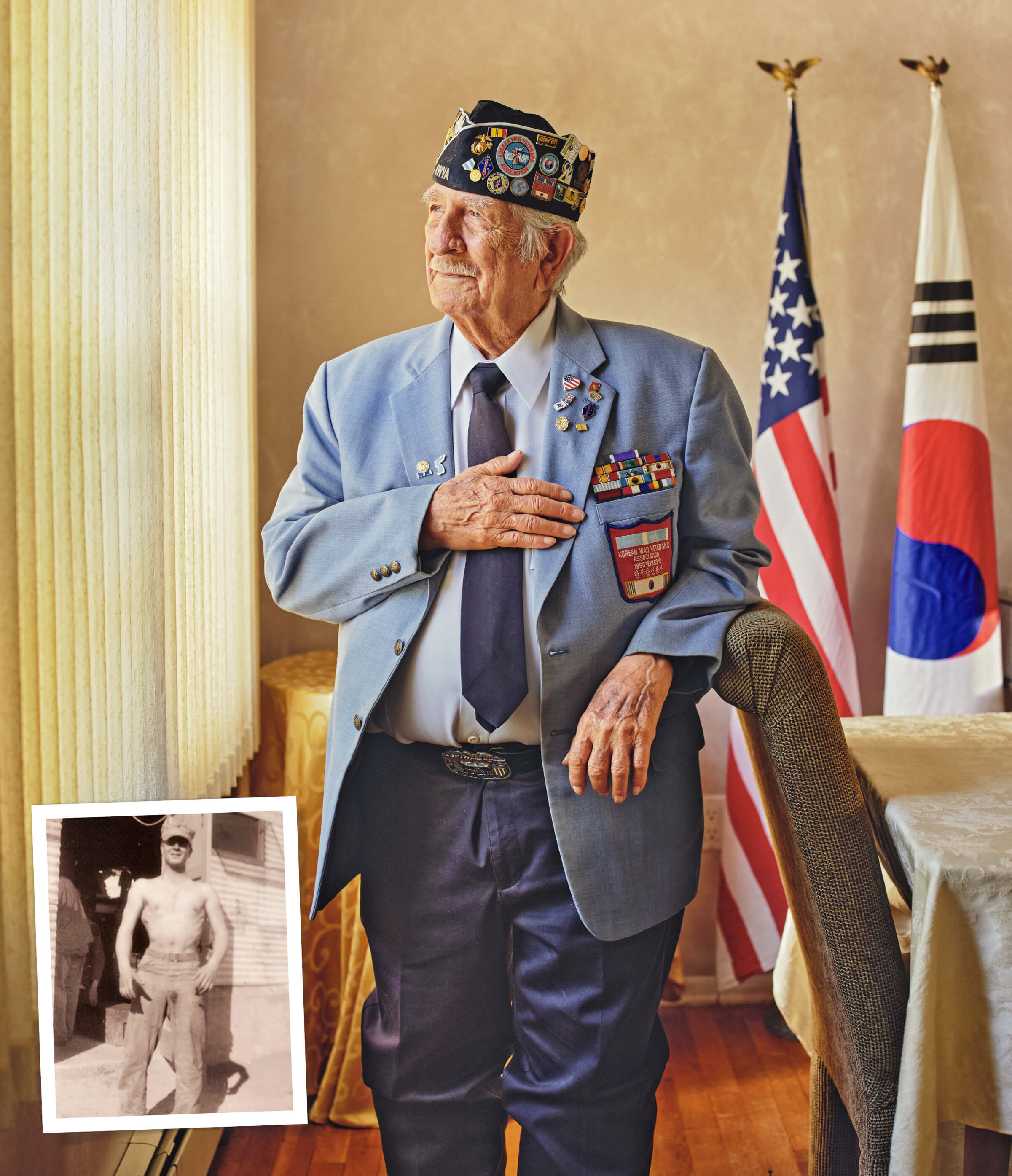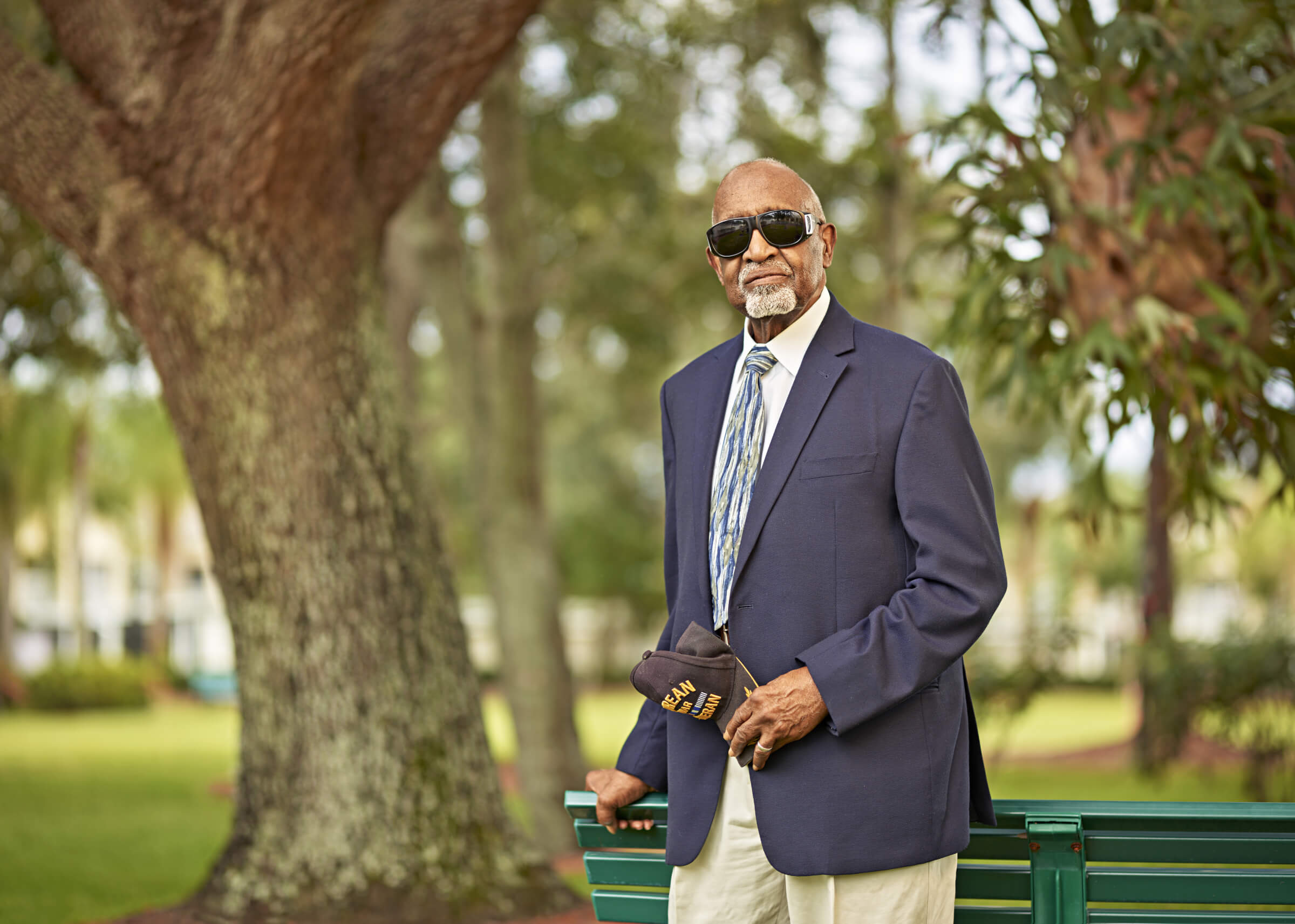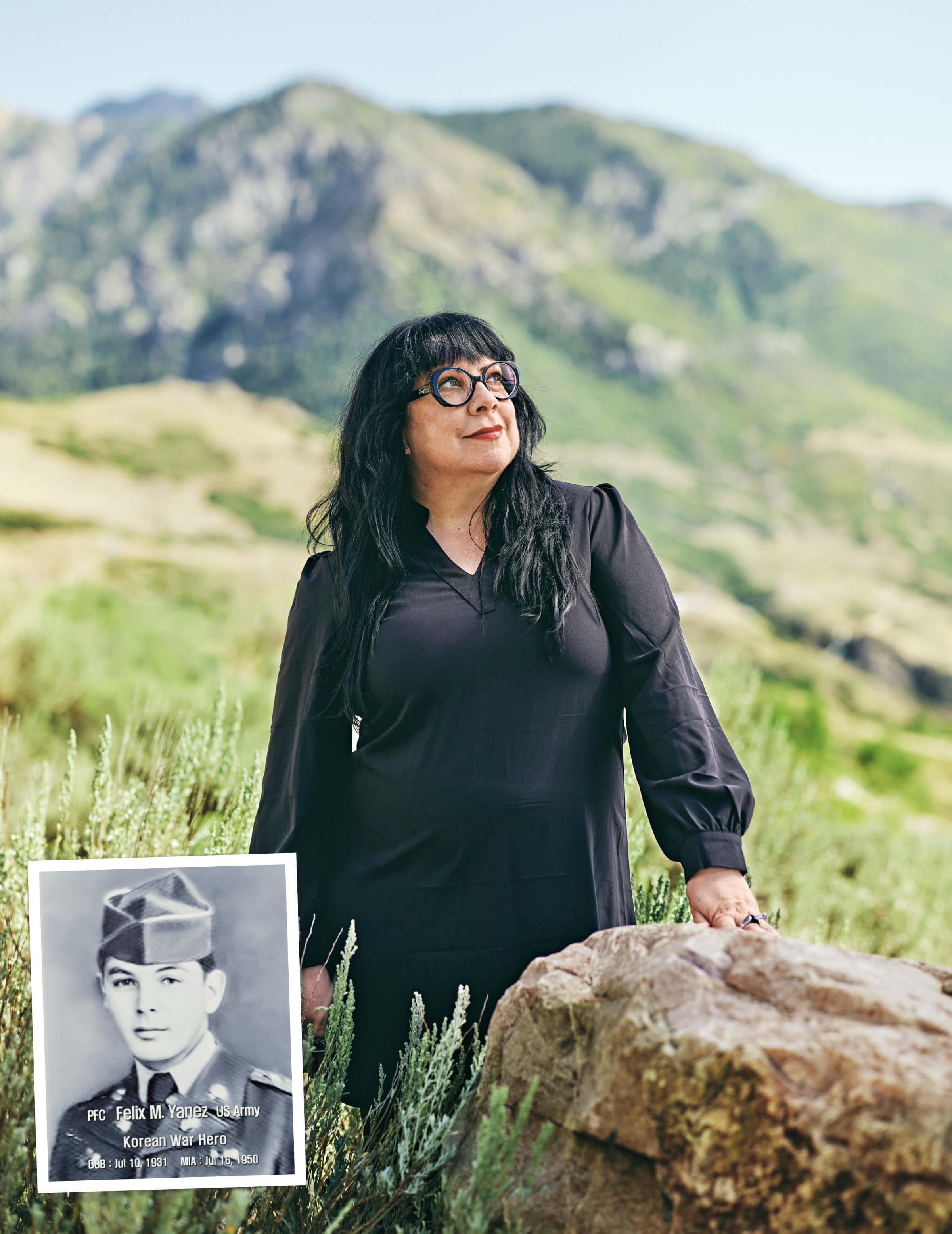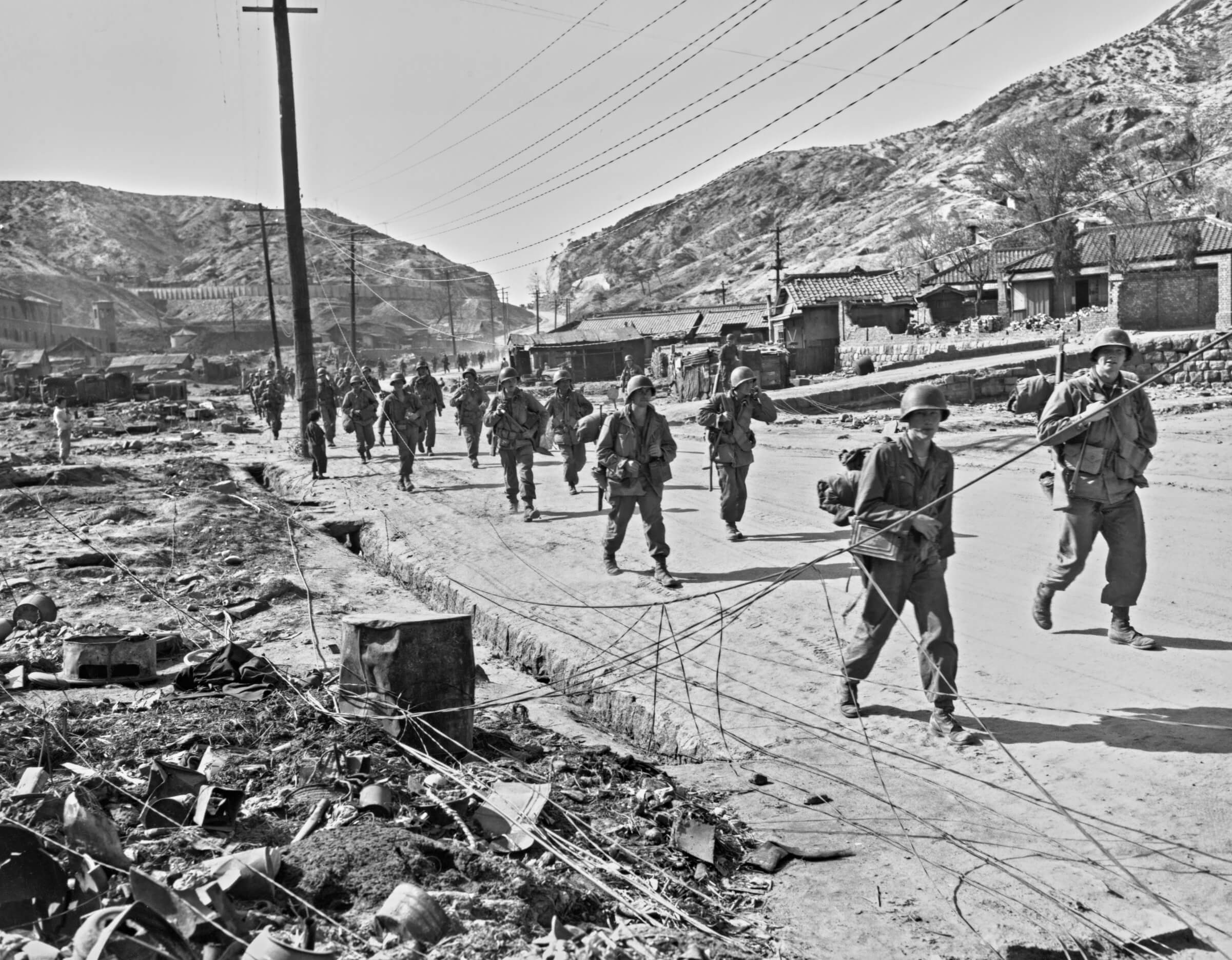Your Life
HEROES OF THE FORGOTTEN WAR
Seven decades later, those whose lives were touched by the fighting in Korea remember

Sal Scarlato, in Korea, 1952, and at his New York home
Falling between World War II and Vietnam, the Korean War, which ended in an armistice 70 years ago, has sometimes seemed to have a less vivid place in America’s memory. But for those who fought in harrowing combat under brutal conditions there, the memories remain indelible, as they do for those who lost loved ones. And for those of Korean ancestry, the war marked the modern birth of a free and prosperous homeland. Here are some stories from that war.
SALVATORE “SAL” SCARLATO, 90
Hauppauge, New York
Private, U.S. Marines, served in Korea from April 11, 1952, to early April 1953. He is a retired electromechanical design draftsman.
▶︎ My story is about hell and hatred, but it is also a story about love.
An 18-year-old that goes into the military doesn’t have a clue what he’s getting into. He doesn’t have a clue about war. He doesn’t have a clue about what a bullet could do to a human body. When I first went to Korea, I said to my superiors: Why are we going to Korea? Where the hell is Korea?
I was assigned to Baker Company, and we were headed to the MLR—the main line of resistance. We only got three-quarters of the way when we were hit with light fire and mortars. The Chinese liked to attack when it was getting dark. They would blow a horn, a bugle and a whistle, and then attack. We jumped out of our truck. The sergeant kept yelling, “Head for the rice paddy!” I started praying.
Over the next many months, there were many battles. There were monsoons, rain so heavy you couldn’t see in front of you. I carried a Browning automatic rifle. It weighed about 20 pounds, and the ammo belt weighed about 13 pounds. I carried all that up mountains, time and again.
One day, we were under heavy fire from the Chinese for 24 hours straight. The guy next to me got hit in the stomach. I had just met him, and he fell on top of me. I put my hand on his belly to apply pressure, but his whole insides were blown out. This was the first, but not the last, time a fellow Marine died in my arms.
In July of 1952, I was wounded in the leg, neck and hand by a grenade. They flew me on a helicopter to a hospital ship. I thought I had a million-dollar wound, because I thought I was going home. But they sent me back to my unit. Back into the war.
One day, we were patrolling, and we found civilians—South Koreans—that had been executed. There were three little children alive, a boy and two girls. The little boy—I took him to an orphanage, but he died when he got there. I felt so much hate. It tore me apart. I was sitting there crying, and the guys were saying, “Calm down, calm down.”
And then I saw this object. A very bright object. It spoke to me, and it said, “Now you know why you are in Korea. It is to save these people.” And that’s all it said.
Ever since, I have loved the Korean people. I felt sorry for them. They were just thrown to the wolves. I have been back to South Korea nine times. South Korea is the only country we ever fought for that still respects and honors us today. I have got South Koreans that are my brothers.

Walter Lee Dowdy Jr. at his home in Sun City Center, Florida
WALTER LEE DOWDY JR., 93
Sun City Center, Florida
Corporal, U.S. Army, served in Korea from July 2 to July 26, 1950. He is a retired director at Kalamazoo Valley Community College in Michigan.
▶︎ I grew up in Benton Harbor, Michigan. My parents had nine kids, and we all finished high school. I graduated in 1948. Me and two buddies were thinking about becoming doctors. We could not afford college without the military, so we enlisted in the Army. My two friends enlisted before me, because I was a little shy, a little scared. My daddy was in World War I. He didn’t talk about it much. My parents cried when I told them that I enlisted.
I went to Fort Leavenworth, Kansas. I was cooking for the officers, still waiting for my orders for officer training school. Before I knew it, I received orders and shipped off to Camp Gifu, Japan. I had never been on a ship before or in a foreign country. My unit was segregated. We had all Black troops and white officers. Harry Truman had desegregated the military in 1948. This was 1950, and our unit was all Black troops. I didn’t know anything about it. To me, it was just status quo.
The Korean War started on June 25, and we were put on alert. I landed in Korea on July 2, and I was 19 years old. They issued us live ammunition and combat gear. When we got in combat, we had all Black troops and Black officers. The first sergeant—he was later killed in Korea—he told me, “We don’t need cooks in Korea. We need soldiers.” I took a radio, as a forward observer.
On July 26, 1950, I went out on patrol. My commander told me to string wire from our post to a mortar position. I was digging in the ground. I looked down a hill and saw guys digging foxholes. And then the bombs started falling. I stayed down until I heard no more bombing. I started to go down the hill and wham! Something hit me, and I felt wet stuff running down my face. I called to my friend, “I been hit.” And that’s all I remember. I was one of the first American casualties of the Korean War.
When I woke, I was in a Tokyo hospital, both eyes bandaged. Gen. MacArthur visited. I couldn’t see him, but he shook my hand and said, “Soldier, you did a good job.” I didn’t wash my hand for a long time.
I ended up in Brooke hospital in Texas, where I spent 11 months. I was in bad shape. There was shrapnel in my left eye, damage to my right eye, and shrapnel lodged in my brain. I lost my sense of smell and have never regained it. I had surgeries, and finally I could see out of my right eye.
I ended up going to Western Michigan University, and I had a good career. I was ordained into the ministry in 2009. I have been married to a lovely lady for 71 years, and we have five children. We’ve got grandchildren and great-grandchildren. But my injuries kept catching up to me.
On March 4 of this year, I awoke and I couldn’t see. So now I am blind. But my wife and I are still doing great.

Tammi Shreeve and her uncle, Felix Yanez (inset)
TAMMI SHREEVE, 50
Ogden, Utah
Homemaker, surviving niece of Felix Yanez, a Korean War fallen hero who was missing in action for more than 70 years
▶︎ When I was growing up, my mother would often talk about him. She would say, “I had a brother who died in the Korean War.” His name was Felix Yanez, and his remains were never found. She’d tell these stories, and when I was young, I didn’t have interest. My mom wanted to go to Hawaii because she heard that his name was on the wall at the Punchbowl [the National Memorial Cemetery of the Pacific, a burial ground for American service members]. So, in 1999, I took her, and we found his name.
Eleven years ago, my mother received an invitation from the Defense POW/MIA Accounting Agency to one of their seminars. They have these meetings you can go to and they’ll tell you what they’re doing to try to locate your family member’s remains.
My uncle came from Douglas, Arizona. When he was young, he played guitar and sang mariachi music. He was the oldest of six children, and my mom remembers that he was her protector.
On July 3, 1950, he was sent to Korea. On July 16, he was involved in a battle near the Kum River. He went missing just days past his 19th birthday. His family was notified on July 25 that he had been killed. My grandmother kept asking for his remains. For years, the family had no way of knowing—could he still be alive? Could he be in a prison somewhere?
I gave the military DNA samples several years ago. In February 2022, they contacted me asking for more DNA. Me, my mom and two other family members supplied some. Then, on July 13, 2022, the military phoned me and told me that they had gotten a positive ID. They had found my uncle.
This is the story I was told: In August 1950, some farmers in Korea had found remains and had buried them. In March 1951, American soldiers came through, and these farmers had led them to the graves. My uncle was designated Unidentified Soldier 789, and he was buried at the Punchbowl cemetery in Hawaii. So when my mother and I went there in 1999, he was already there.
On Sept. 3, 2022, we buried my uncle in Tucson, Arizona. The funeral had full military honors. Both of my uncle’s surviving siblings were there—my mom and her sister, Connie. Soon after, I got to go to Korea. I would stare out the window and wonder if my uncle knew that this was the last place he would be alive. Because of their sacrifices, South Korea is now a beautiful country.
A.J. Baime has written seven books, including The Accidental President: Harry S. Truman and the Four Months That Changed the World.

THE KOREAN WAR: KEY FACTS AND FIGURES
June 25, 1950:
The war starts with a surprise attack by the North Korean army.
October 19, 1950:
Massed Chinese troops cross the North Korean border and attack American, U.N. and South Korean forces.
July 27, 1953:
An armistice ends hostilities at the 38th parallel, with North and South Korea at prewar borders.
American casualties:
54,236 killed and missing; 103,284 wounded
South Korea:
217,000 military deaths
North Korea:
406,000 military deaths
China:
600,000 military deaths
1.79 million:
Total number of U.S. military who served in the combat theater
First war in which the U.S. military fought in desegregated units.
22 nations sent troops and/or supplies to aid South Korea; 90 percent of all troops sent were American.
28,500:
U.S. troops still in Korea in 2023
$876:
South Korean per capita GDP in 1950 (in dollars)
$33,390:
South Korean per capita GDP today
$654:
North Korean per capita GDP in 1950 (in dollars)
$1,589:
North Korean per capita GDP today
→ For additional profiles of those who fought in Korea and more about the war, go to aarp.org/KoreanWar.